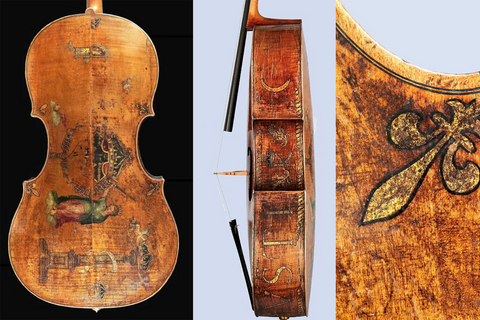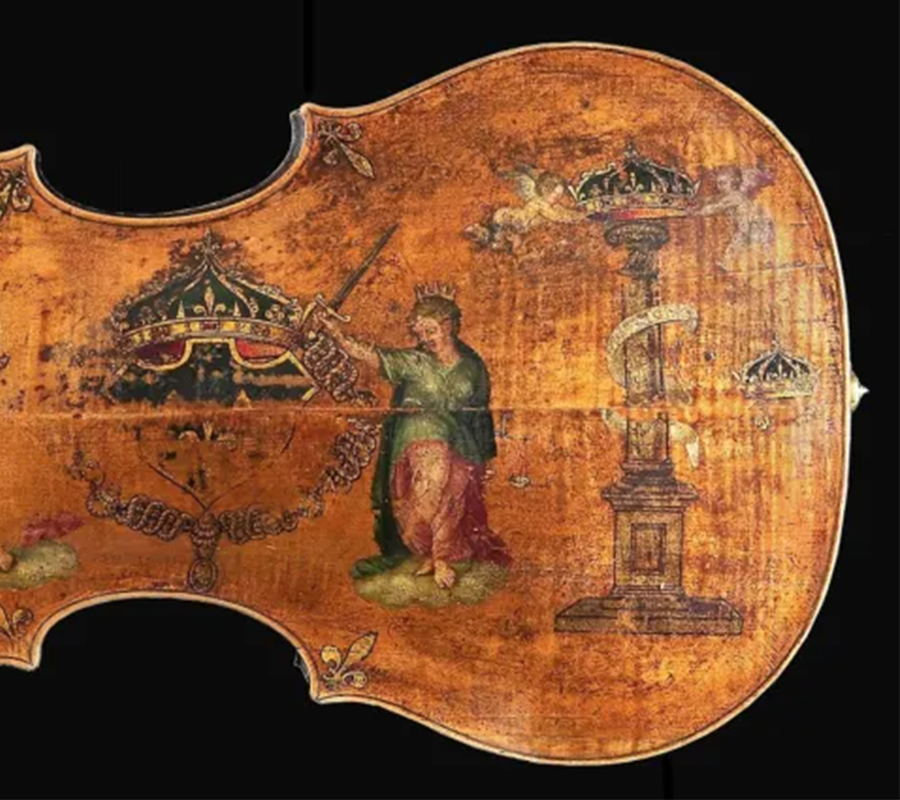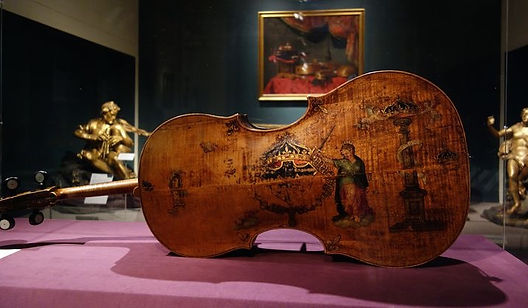In an upcoming blog post, we’ll be reviewing a book titled BC Before Cremona which traces the lineages of violin family instruments leading up to the early Cremonese makers in the mid-1500s. But somewhere around the 1520s to 1530s, violins, violas, and cellos started to be made in a more standardized form. While there are many names tossed around as potential “first” makers of these instruments, Andrea Amati was certainly an early pioneer in the development of the violin family.
The Amati Family and the Cremonese Tradition

The Amati Family began Cremona’s legacy of fine instruments, both by creating their own instruments and teaching a new generation of great luthiers. Andrea Amati was the founder of the Amati dynasty and is generally considered one of the first, if not the first, maker of cellos, violins, and violas. Though Amati did not single-handedly create the modern violin family, he did establish and standardize the construction of many string instruments, including cellos.
The Life and Work of Andrea Amati

Almost nothing is known about Andrea Amati as a person, and what is known is gained from looking at his instruments and some scarce records. According to Carlo Bonetti, the author of several books on Amati and Stradivari, Andrea Amati was born between 1500 and 1505, becoming a master luthier by 1525. Many of his instruments were lost, perhaps due to orders from the Church to ban playing and destroy violins in parts of 16th-century Italy.
However, some of his surviving instruments are from a commission made for Charles IX, the monarch of France. The group consisted of 12 large violins, 12 small violins, 6 violas, and 8 basses/cellos, though many were lost during the French Revolution.
The Oldest Surviving Cello by Andrea Amati

One of the oldest surviving cellos in the world, and perhaps the oldest, is “The King” made by Andrea Amati. This cello, made in the mid-16th century, is decorated with several ‘fleur de lis’, the symbol of French royalty, and 2 figures, representing ‘piety’ and ‘justice’. It also has a ‘K’ on the side, standing for Karolaus, or Charles IX.
It is thought that since this commission was so large, this cello was actually made before (as early as 1538) and then painted with French ornamentation to make it suitable for the royal court (around 1560). In 1801, it was cut down to modern dimensions by Sebastian Renault, a Parisian luthier, and today it is housed in the National Music Museum in Vermillion, South Dakota, along with 2 Andrea Amati violins and a viola.
Andrea Amati’s contributions to the development of the violin family cannot be overstated. As the founder of the Amati dynasty and one of the earliest known makers of cellos, violins, and violas, Amati laid the foundation for the Cremonese tradition of fine instrument-making that would go on to influence generations of luthiers. While much about his personal life remains a mystery, the legacy of his instruments, including the remarkable “King” cello, continue to inspire and captivate musicians and instrument enthusiasts alike.